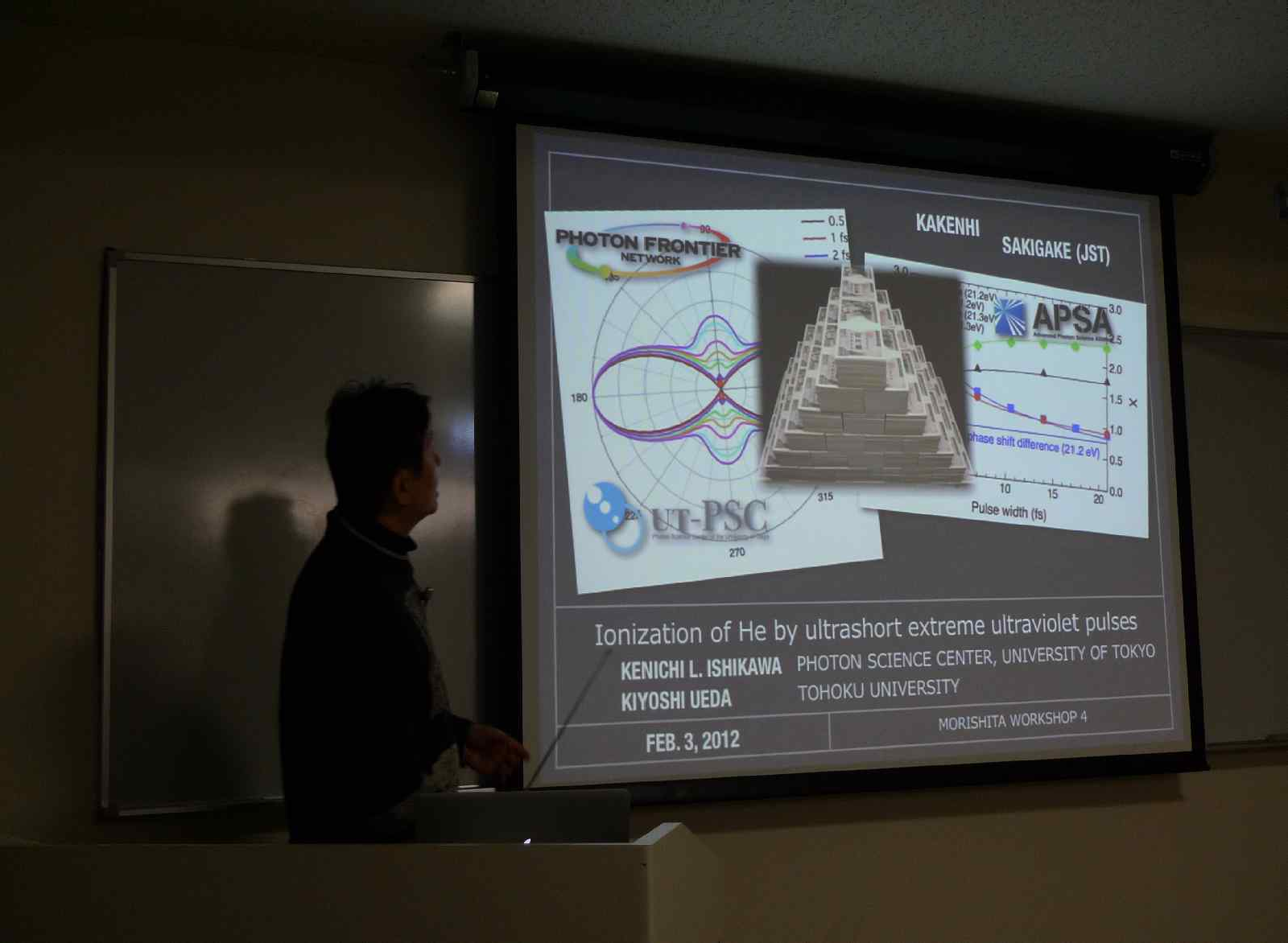| Oleg I. Tolstikhin |
Kurchatov Institute &
MIPT
|
Adiabatic Theory
|
Jan16-Feb 4, 2012 |
| Chiennan Liu |
Fu-jen University |
He dynamics under FEL |
Jan 30-Feb 10, 2011
|
| Yasuo Okajima |
Nara Inst Sci & Tech
|
HHG |
Jan 29-Feb 3, 2012
|
| Hideki Ohmura |
AIST |
Polar molecules, two color
laser |
Feb 3, 2012
|
| Nguyen Ngoc Ty |
U of Tokyo |
HHG |
Feb 1, 2012
|
| Kenichi Ishikawa |
U of Tokyo |
He dynamics |
Feb 1, 2012
|
| Takeshi Sato |
U of Tokyo
|
Multielectron molecular
dynamics
|
Feb 1, 2012
|
| Misaki Okunishi |
Tohoku U |
Molecular imaging |
Feb 3, 2012
|
| Linda Hamonou |
UEC |
Tunnel ionization of
molecules
|
Jan16-Feb 10, 2012 |
Michio Matsuzawa
|
UEC
|
|
Feb 1, 3, 2012 |
Shinichi Watanabe
|
UEC |
|
Jan16-Feb 10, 2012 |
| Toru Morishita |
UEC
|
Chair
|
Jan16-Feb 10, 2012 |
Vinh Trinh Hoai
|
UEC |
Tunnel ionizatoin
|
Jan16-Feb 10, 2012 |
Vinh Pham Nguyen Thanh
|
UEC |
Rescattering
|
Jan16-Feb 10, 2012 |
Masataka Ohmi
|
UEC |
TDSE
|
Jan16-Feb 10, 2012 |
Tomotake Yanakoshi
|
UEC |
Cold atoms
|
Jan16-Feb 10, 2012 |
Tsutomu Yamazaki
|
UEC |
Low energy peak
|
Jan16-Feb 10, 2012 |
Hsumin Hoang
|
UEC |
3-body break up
|
Jan16-Feb 10, 2012 |
Osamu Ban
|
UEC |
|
Jan16-Feb 10, 2012 |
Kouki Kuromaru
|
UEC |
|
Jan16-Feb 10, 2012 |
Yoshimari Nasu
|
UEC |
|
Jan16-Feb 10, 2012 |
Kensuke Otani
|
UEC |
|
Jan16-Feb 10, 2012 |
Wataru Shimoaraiso
|
UEC |
|
Jan16-Feb 10, 2012 |



